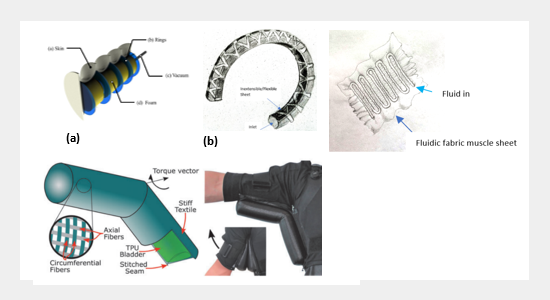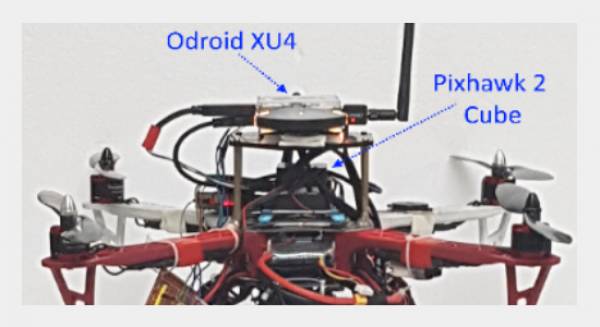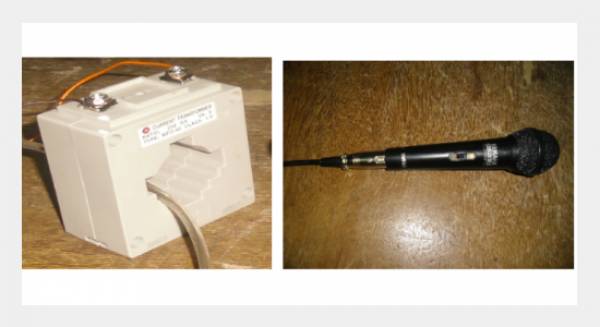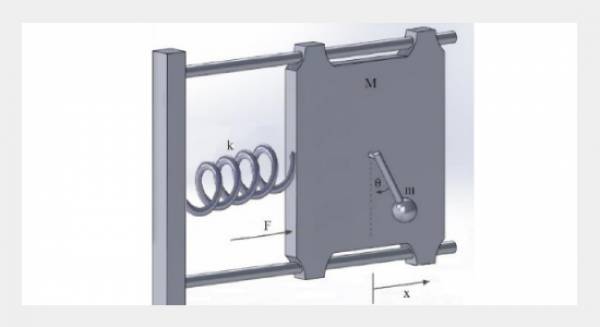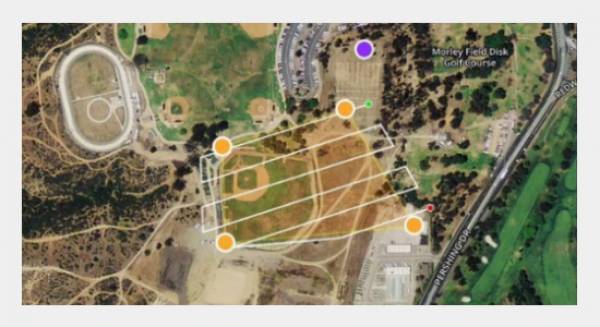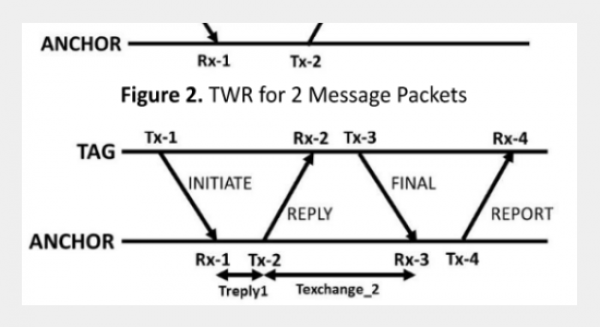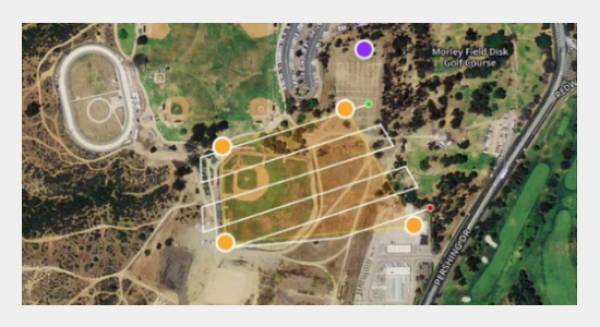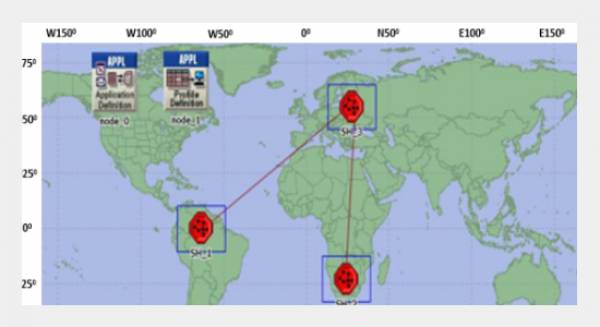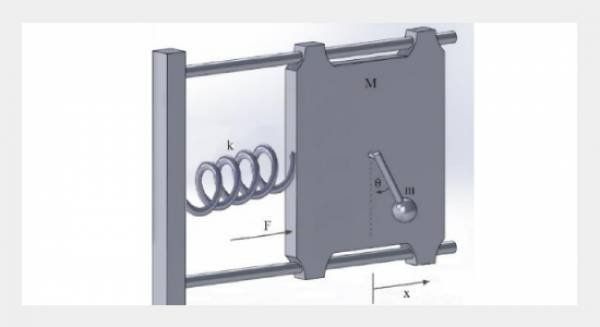REFERENCES
- [1] D.Chiaradia, M. Xiloyannis, M.Solazzi, L. Masia, and A. Frisoli, “Rigid Versus Soft Exoskeletons: Interaction Strategies for Upper Limb Assistive Technology,” Wearable Robotics 2020:67–90. https://doi.org/10.1016/B978-0-12-814659-0.00004-7
- [2] D. Rus and M. T. Tolley, “Design, fabrication and control of soft robots,” Nature 2015;521:467–75. https://doi.org/10.1038/nature14543
- [3] G. Kwakkel, R.V. Peppen, R. C. Wagenaar, S. W. Dauphinee, C. Richards, A. Ashburn, K. Miller, N. Lincoln, and C. Partridge, I. Wellwood and P. Langhome, “Effects of augmented exercise therapy time after stroke: a meta- analysis,” Stroke 2004;35:2529–39. https://doi.org/10.1161/01.STR.0000143153.76460.7d
- [4] L. Shore, V. Power, B. Hartigan, S. Schülein, E. Graft, A. D. Eyto, and Leonard O’Sullivan, “Exoscore: A Design Tool to Evaluate Factors Associated With Technology Acceptance of Soft Lower Limb Exosuits by Older Adults,” Hum Factors 2020;62:391– 410. https://doi.org/10.1177/0018720819868122
- [5] T. Arnold, and M. Scheutz, “The Tactile Ethics of Soft Robotics: Designing Wisely for Human-Robot Interaction,” Soft Robot 2017;4:81–7. https://doi.org/10.1089/soro.2017.0032
- [6] D. Sasaki, T. Noritsugu, M. Takaiwa, and H. Yamamoto, “ Wearable power assist device for hand grasping using pneumatic artificial rubber muscle,” RO-MAN 2004 13th IEEE International Workshop on Robot and Human Interactive Communication (IEEE Catalog No04TH8759) n.d. https://doi.org/10.1109/ROMAN.2004.1374840
- [7] S. Joe, M. Totaro, H. Wang, and L. Beccai, “Development of the Ultralight Hybrid Pneumatic Artificial Muscle: Modelling and optimization,” PLoS One 2021;16:e0250325. https://doi.org/10.1371/journal.pone.0250325
- [8] J. Wirekoh, N. Parody, C. N. Riviere, and P. Y-L, “Design of fiber-reinforced soft bending pneumatic artificial muscles for wearable tremor suppression devices,” Smart Materials and Structures 2021;30:015013. https://doi.org/10.1088/1361-665X/abc062
- [9] S. Liu, Z. Fang, J. Liu, K. Tang, J. Luo, J. Yi, X.Hu, and Z. Wang, “A Compact Soft Robotic Wrist Brace With Origami Actuators,” Frontiersin Robotics and AI 2021;8. https://doi.org/10.3389/frobt.2021.614623
- [10] M. Zhu, T. N. Do, E. Hawkes, and Y. Visell, “Fluidic Fabric MuscleSheets for Wearable and Soft Robotics,” Soft Robotics 2020;7:179–97. https://doi.org/10.1089/soro.2019.0033
- [11] K. C. Galloway, P. Polygerinos, C. J. Walsh, and R. J. Wood, “Mechanically programmable bend radius for fiber-reinforced soft actuators,” 2013 16th International Conference on Advanced Robotics (ICAR) 2013. https://doi.org/10.1109/ICAR.2013.6766586
- [12] H. K. Yap, J. H. Lim, F. Nasrallah, J. C. H. Goh, and R. C. H. Yeow, “A soft exoskeleton for hand assistive and rehabilitation application using pneumatic actuators with variable stiffness,” 2015 IEEE International Conference on Robotics and Automation (ICRA) 2015. https://doi.org/10.1109/ICRA.2015.7139889
- [13] Z. S. Navabi, and D. Zhou, “A Novel Soft Actuator for Continuum Soft Robot Arm,” Proceedings of the 2nd International Conference on Biomedical Engineering and Bioinformatics- ICBEB 2018 2018. https://doi.org/10.1145/3278198.3278223
- [14] M. Pan, C. Yuan, H. Anpalagan, A. Plummer, J. Zou, J. Zhang, and C. Bowen, “Soft Controllable Carbon Fibre-based Piezoresistive Self-Sensing Actuators,” Actuators 2020;9:79. https://doi.org/10.3390/act9030079
- [15] C. T. O’Neill, C. M. McCann, C. J. Hohimer, K. Bertoldi, and C. J. Walsh, “Unfolding Textile-Based Pneumatic Actuators for Wearable Applications,” Soft Robotics 2021. https://doi.org/10.1089/soro.2020.0064
- [16] L. N. Awad, J. Bae, K. O’Donnell, S. M. M. D. Rossi, K. Hendron, L. H. Sloot, P. Kudzia, S. Allen, K. G. Holt, T. D. Ellis, and C. J. Walsh, “A soft robotic exosuit improves walking in patients after stroke,” Science Translational Medicine 2017;9:eaai9084. https://doi.org/10.1126/scitranslmed.aai9084
- [17] M. Nilsson, J. Ingvast, J. Wikander, and H. V. Holst, “The Soft Extra Muscle system for improving the grasping capability in neurological rehabilitation,” 2012 IEEE-EMBS Conference on Biomedical Engineering and Sciences 2012. https://doi.org/10.1109/IECBES.2012.6498090
- [18] F. Alnajjar, H. Umari, W. K. Ahmed, M. Gochoo, A. A. Vogan, A. Aljumaily, P. Mohamed, and S. Shimoda, “CHAD: Compact Hand-Assistive Device for enhancement of function in hand impairments,” Robotics and Autonomous Systems 2021;142:103784. https://doi.org/10.1016/j.robot.2021.103784
- [19] M. Hosseini, R. Meattini, and G. Palli, and C. Melchiorri, “A WearableRobotic Device Based on Twisted String Actuation for Rehabilitation and Assistive Applications,” Journal of Robotics 2017;2017:1–11. https://doi.org/10.1155/2017/3036468
- [20] T. Tsabedze, E. Hartman, E. Abrego, C. Brennan, and J. Zhang, “TSA-BRAG: A Twisted String Actuator-powered Biomimetic Robotic Assistive Glove,” 2020 International Symposium on Medical Robotics (ISMR) 2020. https://doi.org/10.1109/ISMR48331.2020.9312928
- [21] T. Helps, M. Taghavi, S. Wang, and J. Rossiter, “Twisted RubberVariable-Stiffness Artificial Muscles,” Soft Robotics 2020;7:386–95. https://doi.org/10.1089/soro.2018.0129
- [22] S. J. Furst, and S. Seelecke, “Modeling and experimental characterization of the stress, strain, and resistance of shape memory alloy actuator wires with controlled power input,” Journal of Intelligent Material Systems and Structures 2012;23:1233–47. https://doi.org/10.1177/1045389x12445036
- [23] L. J-H, Y. S. Chung, and H. Rodrigue, “Long Shape Memory Alloy Tendon-based Soft Robotic Actuators and Implementation as a Soft Gripper,” Scientific Reports. https://doi.org/10.1038/s41598-019-47794-1
- [24] S. J. Park, U. Kim,and C. H. Park, “A Novel Fabric Muscle Based on Shape Memory Alloy Springs,” Soft Robotics 2020;7:321– 31. https://doi.org/10.1089/soro.2018.0107
- [25] A. N. Mallick, M. Kumar, K. Arora and A. K. Sahani, “Finite Element Modeling of a Pressure Ulcers Preventive Bed for Neonates,” 2022 IEEE-EMBS International Conference on Wearable and Implantable Body Sensor Networks (BSN), Ioannina, Greece, 2022, pp. 1-4. https://doi.org/10.1109/BSN56160.2022.9928469
- [26] Y. Almubarak, and Y. Tadesse, “Twisted and coiled polymer (TCP) muscles embedded in silicone elastomer for use in soft robot,” International Journal of Intelligent Robotics and Applications 2017;1:352–68. https://doi.org/10.1007/s41315-017-0022-x
- [27] F. Karami, L. Wu, and Y. Tadesse, “Modeling of One-ply and Two-ply Twisted and Coiled Polymer (TCP) Artificial Muscles,” IEEE/ASME Transactions on Mechatronics 2020:1–1. https://doi.org/10.1109/TMECH.2020.3014931
- [28] S. Aziz, B. Villacorta, S. Naficy, B. Salahuddin, S. Gao, T. A. Baigh, D. Sangian, and Z. Zhu, “A microwave powered polymeric artificial muscle,” Applied Materials Today 2021;23:101021. https://doi.org/10.1016/j.apmt.2021.101021
- [29] S. G. Fitzgerald, G. W. Delaney, and D. Howard, “A Review of Jamming Actuation in Soft Robotics,” Actuators 2020;9:104. https://doi.org/10.3390/act9040104
- [30] M. Shen, A. B. Clark, and N. Rojas, “A Scalable Variable Stiffness Revolute Joint Based on Layer Jamming for Robotic Exoskeletons,” Towards Autonomous Robotic Systems 2020:3–14. https://doi.org/10.1007/978-3-030-63486-5_1
- [31] M. Ibrahimi, L. Paternò, L. Ricotti, and A. Menciassi, “A Layer Jamming Actuator for Tunable Stiffness and Shape-Changing Devices,” Soft Robot 2021;8:85–96. https://doi.org/10.1089/soro.2019.0182
- [32] V. Sanchez, C. J. Walsh, and R. J. Wood, “Soft Robotics: Textile Technology for Soft Robotic and Autonomous Garments (Adv. Funct. Mater. 6/2021),” Advanced Functional Materials 2021;31:2170041. https://doi.org/10.1002/adfm.202170041
- [33] X. Chen, L. Gong, L. Wei, S-C Yeh, L. D. Xu, L. Zheng, and Z. Zou, “ A Wearable Hand Rehabilitation System With Soft Gloves,” IEEE Transactions on Industrial Informatics 2021;17:943– 52. https://doi.org/10.1109/TII.2020.3010369
- [34] M. Li, T. Wang, Y. Zhuo, B. He, T. Tao, J. Xie, and G. Xu, “A soft robotic glove for hand rehabilitation training controlled by movements of the healthy hand,” 2020 17th International Conference on Ubiquitous Robots (UR) 2020. https://doi.org/10.1109/UR49135.2020.9144753
- [35] L. Wang, G. Peng, W. Yao, S. Biggar, C. Hu, X. Yin, and Y. Fan, “10-Soft robotics for hand rehabilitation,” Intelligent Biomechatronics in Neurorehabilitation 2020:167–76. https://doi.org/10.1016/B978-0-12-814942-3.00010-6
- [36] B. B. Kang, H. Choi, H. Lee, and K. J. Cho, “Exo-Glove Poly II: A Polymer-Based Soft Wearable Robot for the Hand with a Tendon-Driven Actuation System,” Soft Robotics 2019;6:214–27. https://doi.org/10.1089/soro.2018.0006
- [37] T. H. Hong, S. H. Park, J. H. Park, N. J. Paik, and Y. L. Park, “Design of Pneumatic Origami Muscle Actuators (POMAs) for A Soft Robotic Hand Orthosis for Grasping Assistance,” 2020 3rd IEEE International Conference on Soft Robotics (RoboSoft) 2020. https://doi.org/10.1109/RoboSoft48309.2020.9116046
- [38] H. K. Yap, J. H. Lim, F. Nasrallah, F. Z. Low, J. C. H. Goh, and R. C. H. Yeow, “MRC-glove: A fMRI compatible soft robotic glove for hand rehabilitation application,” 2015 IEEE International Conference on Rehabilitation Robotics (ICORR) 2015. https://doi.org/10.1109/ICORR.2015.7281289
- [39] A. N. Mallick, M. Kumar, B. Basumatary, K. Arora and A. K. Sahani, “Design and Testing of Pressure Ulcers Preventive Bed for Neonates in Neonatal Intensive Care Units,” in IEEE Transactions on Medical Robotics and Bionics, vol. 5, no. 2, pp. 421-428, May 2023. https://doi.org/10.1109/TMRB.2023.3265635
- [40] M. Hosseini, R. Meattini, A. San-Millan, G. Palli, C. Melchiorri , and J. Paik, “A sEMG-Driven Soft ExoSuit Based on Twisted String Actuators for Elbow Assistive Applications,” IEEE Robotics and Automation Letters 2020;5:4094–101. https://doi.org/10.1109/LRA.2020.2988152
- [41] V. Oguntosin, and A. Abdulkareem, “Design of a pneumatic soft actuator controlled via eye tracking and detection,” Heliyon 2020. https://doi.org/10.1016/j.heliyon.2020.e04388
- [42] C. Correia, K. Nuckols, D. Wagner, Y. M. Zhou, M. Clarke, D. Orzel, R. Solinsky, S. Paganoni, and C. J. Walsh, “Improving Grasp Function After Spinal CordInjury With a Soft Robotic Glove,” IEEE Trans Neural Syst 2020. https://doi.org/10.1109/TNSRE.2020.2988260
- [43] D. Chiaradia, L. Tiseni, M. Xiloyannis, M. Solazzi, L. Masia, and A. Frisoli, “An Assistive Soft Wrist Exosuit for Flexion Movements With an Ergonomic Reinforced Glove,” Fron 2020. https://doi.org/10.3389/frobt.2020.595862
- [44] Y. Yang, Y. Zhang, Z. Kan, J. Zeng, and M. Y. Wang, “HybridJamming for Bioinspired Soft Robotic Fingers,” Soft Robotics 2020;7:292–308. https://doi.org/10.1089/soro.2019.0093
- [45] A. J. Y. Goh, H. K. Yap, G. K. Ramachandran, and C. H. Yeow, “Application of Novel Graphite Flex Sensors in Closed-Loop Angle Feedback on a Soft Robotic Glove for Stroke Rehabilitation,” JPO Journal of Prosthetics and Orthotics 2020;32:272–85. https://doi.org/10.1097/JPO.0000000000000337
- [46] C. M. Thalman, T. Hertzell, and H. Lee, “Toward A Soft RoboticAnkle-Foot Orthosis (SR-AFO) Exosuit for Human Locomotion: Preliminary Results in Late Stance Plantarflexion Assistance,” 2020 3rd IEEE International Conference on Soft Robotics (RoboSoft) 2020. https://doi.org/10.1109/RoboSoft48309.2020.9116050
- [47] L. N. Awad, P. Kudzia, D. A. Revi, T. D. Ellis, and C. J. Walsh, “Walkingfaster and farther with a soft robotic exosuit: Implications for post-stroke gait assistance and rehabilitation,” IEEE Open J Eng Med Biol 2020;1:108– https://doi.org/10.1109/OJEMB.2020.2984429
- [48] Y. Zhang, Z. Wang, C. Chen, T. Fang, R. Sun, and Y. Li, “A lightweight soft exoskeleton in lower limb assistance,” 2020 Chinese Automation Congress (CAC) 2020. https://doi.org/10.1109/CAC51589.2020.9327551
- [49] J. Fang, J. Yuan, M. Wang, L. Xiao, J. Yang, Z. Lin, P. Xu, and L. Hou, “Novel Accordion-Inspired Foldable Pneumatic Actuators for Knee Assistive Devices,” Soft Robotics 2020;7:95– 108. https://doi.org/10.1089/soro.2018.0155
- [50] E. Kokkoni, Z. Liu, and K. Karydis, “Development of a Soft Robotic Wearable Device to Assist Infant Reaching,” Journal of Engineering and Science in Medical Diagnostics and Therapy 2020;3. https://doi.org/10.1115/1.4046397
- [51] X. Wu, H. Liu, Z. Liu, M. Chen, F. Wan, C. Fu, H. Asada, Z. Wang, and C. Song, “RoboticCane as a Soft SuperLimb for Elderly Sit-to- Stand Assistance,” 2020 3rd IEEE International Conference onSoft Robotics (RoboSoft) 2020. https://doi.org/10.1109/RoboSoft48309.2020.9116028
- [52] J. Udea, J. Schultz, and H. Asada, “Cellular Actuators: Modularity and Variability in Muscle-inspired Actuation,” Elsevier Science, 2017
- [53] Z. Chi and Q. Xu, “Recent advances in the control of piezoelectric actuators,” Int. J. Adv. Robot. Syst., vol. 11, no. 11, p. 182, 2014. https://doi.org/10.5772/59099
- [54] A. N. Mallick, M. Kumar, A. Chander, R. Kumar, K. Arora and A. K. Sahani, “Automatic Pasteurized Formula Milk Preparation Machine with Automatic Sterilized Containers,” 2022 44th Annual International Conference of the IEEE Engineering in Medicine & Biology Society (EMBC), Glasgow, Scotland, United Kingdom, 2022, pp. 2663-2667. https://doi.org/10.1109/EMBC48229.2022.9871811
- [55] X. Jiang, F. Tang, J. T. Wang, and T. P. Chen, “Growth and properties of PMN-PT single crystals,” Physica C, vol. 364-365, pp. 678–683, 2001. https://doi.org/10.1016/S0921-4534(01)00878-4
- [56] W. S. Chu, K. T. Lee, S. H. Song, M. W. Han, J. Y. Lee, H. S. Kim, M. S. Kim, Y. J. Park, K. J. Cho, and S. H. Ahn, “Review of biomimetic underwater robots using smart actuators,” Int. J. Precis. Eng. Manuf., vol. 13, no. 7, pp. 1281-1292, 2012. https://doi.org/10.1007/s12541-012-0171-7
- [57] J. Ueda, T. W. Secord, and H. H. Asada, “Large effective-strain piezo- electric actuators using nested cellular architecture with exponential strain amplification mechanisms,” IEEE/ASME Trans. Mech., vol. 15, no. 5, pp. 770–782, 2010. https://doi.org/10.1109/TMECH.2009.2034973
- [58] J.M. Jani, M. Leary, A. Subic, and M. A. Gibson, “A review of shape memory alloy research, applications and opportunities,” Mater. Des., vol. 56, pp. 1078–1113, 2014 https://doi.org/10.1016/j.matdes.2013.11.084
- [59] G. Song, J. Zhao, X. Zhou, and J. A. D. Abreu-Garcia, “Tracking control of a piezoceramic actuator with hysteresis compensation using inverse Preisach model,” IEEE/ASME Trans. Mech., vol. 10, no. 2, pp. 198–209, 2005. https://doi.org/10.1109/TMECH.2005.844708
- [60] R. J. Wood, E. Steltz, and R.S. Fearing, “Optimal energy density piezo- electric bending actuators,” Sensor. Actuat. A Phys., vol. 119, no. 2, pp. 476–488, 2005. https://doi.org/10.1016/j.sna.2004.10.024
- [61] P. A. York and R. J. Wood, “A geometrically-amplified in-plane piezoelectric actuator for mesoscale robotic systems,” in Proc. IEEE Int. Conf. Robot. Autom., 2017, pp. 1263–1268. https://doi.org/10.1109/ICRA.2017.7989150
- [62] R. Pelrine, R. D. Kornbluh, Q. Pei, S. Stanford, S. Oh, J. Eckerle, R. J. Full, M. A. Rosenthal, and K. Meijer, “Dielectric elastomer artificial muscle actuators: toward biomimetic motion,” in: Smart Structures and Materials 2002: Electroactive Polymer Actuators and Devices (EAPAD). SPIE,2002, pp. 126–137. https://doi.org/10.1117/12.475157
- [63] Y. Bar-Cohen, “Electroactive Polymer (EAP) Actuators as Artificial Muscles: Reality, Potential, and Challenges, ser,” Press Monograph Series. Society of Photo Optical, 2004.
- [64] R. Pelrine, R. Kornbluh, and G. Kofod, “High-strain actuator materials based on dielectric elastomers,” Adv. Mater., vol. 12, no. 16, pp. 1223– 1225, 2000.
https://doi.org/10.1002/1521-4095(200008)12:16<1223::AID-ADMA1223>3.0.CO;2-2
- [65] J. Zhang, J. Sheng, C. T. O’Neill, C. J. Walsh, R. J. Wood, J. H. Ryu, J. P. Desai, and M. C, “Yip, Robotic artificial muscles: Current progress and future perspectives,” IEEE Transactions on Robotics, 2019, 35(3), 761-781. https://doi.org/10.1109/TRO.2019.2894371
- [66] D. Villegas, M. V. Damme, B. Vanderborght, P. Beyl, and D. Lefeber, “Third-generation pleated pneumatic artificial muscles for robotic applications: Development and comparison with McKibben muscle,” Adv. Robot., vol. 26, no. 11-12, pp. 1205–1227, 2012. https://doi.org/10.1080/01691864.2012.689722
- [67] H. A. Baldwin, “Realizable models of muscle function,” in Proc. Rock Biomechanics Symp, 1969, p. 139148. https://doi.org/10.1007/978-1-4615-6558-1_14
- [68] F. Daerden, “Conception and realization of pleated pneumatic artificial muscles and their use as compliant actuation elements,” Master Thesis, Vrije University Brussel, Belgium, 1999.
- [69] B. Shih, D. Drotman, C. Christinason, Z. Huo, R. White, H. I. Christensen, and M. T. Tolley, “Custom soft robotic gripper sensor skins for haptic object visualization,” in Proc. IEEE/RSJ Int. Conf. Intell. Robot. Syst., 2017, to appear. https://doi.org/10.1109/IROS.2017.8202199
- [70] K. C. Galloway, K. P. Becker, B. Phillips, J. Kirby, S. Licht, D. Tchernov, R. J. Wood, and D. F. Gruber, “Soft robotic grippers for biological sampling on deep reefs,” Soft Robot., vol. 3, no. 1, pp. 23–33, 2016. https://doi.org/10.1089/soro.2015.0019
- [71] C.-P. Chou and B. Hannaford, “Measurement and modeling of McKibben pneumatic artificial muscles,” IEEE Trans. Robot. Autom., vol. 12, no. 1, pp. 90–102, 1996. https://doi.org/10.1109/70.481753
- [72] M. A. Meller, J. B. Chipka, M. J. Bryant, and E. Garcia, “Modeling of the energy savings of variable recruitment McKibben muscle bundles,” pp. 1–11, 2015. https://doi.org/10.1117/12.2084444
- [73] C. S. Haines, N. Li, G. M. Spinks, A. E. Aliev, J. Di, and R. H. Baughman, “New twist on artificial muscles,” Proceedings of the National Academy of Sciences of the United States of America, 2016. https://doi.org/10.1073/pnas.1605273113
- [74] J. Foroughi, G. M. Spinks, G. G. Wallace, J. Oh, M. E. Lozlov, S. Fang, T. Mirfakhrai, J. D. W. Madden, M. K. Shin, S. J. Kim, and R. H. Baughman, “Torsional carbon nanotube artificial muscles,” Science 334(6055):494–497,2011.
- [75] C. L. Choy, F. C. Chen, and K. Young, “Negative thermal expansion in oriented crystalline polymers,” J Polym Sci, Polym Phys Ed 19(2):335–352,1981. https://doi.org/10.1002/pol.1981.180190213
- [76] S. H. Kim, M. D. Lima, M. E. Kozlov, C. S. Haines, G. M. Spinks, S. Aziz, C. Choi, H. J. Sim, X. Wang, H. Lu, D. Qian, J. D. W. Madden, R. H. Baughman, and S. J. Kim, “Harvesting temperature fluctuations as electrical energy using torsional and tensile polymer muscles,” Energy Environ Sci 8(11):3336–3344,2015. https://doi.org/10.1039/C5EE02219C
- [77] L. Reid, and W. Y. Hamad, “Electro-osmotic Actuators from Cellulose Nanocrystals and Nanocomposite Hydrogels,” ACS Applied Polymer Materials 4.1 (2021): 598-606. https://doi.org/10.1021/acsapm.1c01530
- [78] A. N. Mallick, M. Kumar, B. Basumatary, K. Arora and A. K. Sahani, “Design and Testing of Pressure Ulcers Preventive Bed for Neonates in Neonatal Intensive Care Units,” in IEEE Transactions on Medical Robotics and Bionics, vol. 5, no. 2, pp. 421-428, May 2023. https://doi.org/10.1109/TMRB.2023.3265635
- [79] M. Y. Choi, Y. Shin, H. S. Lee, S. Y. Kim, and J. H. Na, “Multipolar spatial electric field modulation for freeform electroactive hydrogel actuation,” Scientific reports 10.1 (2020): 2482. https://doi.org/10.1038/s41598-020-59318-3
- [80] L. Seurre, H. Aréna, S. Ghenna, C. Soyer, S. Grondel, C. Plesse, G. T. M. Nguyen, F. Vidal, and E. Cattan, “Behavior of conducting polymer-based micro-actuators under a DC voltage,” Sensors and Actuators B: Chemical 380 (2023): 133338. https://doi.org/10.1016/j.snb.2023.133338
- [81] M. K. Hilalpure, “Terfenol-D actuator behavior under pre-stress and step input current,” Materials Today: Proceedings 5.9 (2018): 19092-19101. https://doi.org/10.1016/j.matpr.2018.06.262
- [82] L. Chen, Y. Zhu, J. Ling, and M. Zhang, “Development and Characteristic Investigation of a Multidimensional Discrete Magnetostrictive Actuator,” IEEE/ASME Transactions on Mechatronics 27.4 (2022): 2071-2079. https://doi.org/10.1109/TMECH.2022.3173619
- [83] M. Scheutz, “The Inherent Dangers of Unidirectional Emotional Bonds between Humans and Social Robots,” Robot Ethics Ethical Soc. Implic. Robot., no. November, pp. 205–221, 2011.


